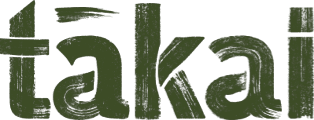
Mātauranga Māori
An introduction to mātauranga Māori – Māori knowledge.
Ko te manu kai i te miro nōna te ngahere. Ko te manu kai i te mātauranga nōna te ao.
What is mātauranga Māori?
Giving a definitive translation of mātauranga Māori is challenging, as it covers a wide expanse of knowledge and understanding. At its simplest, mātauranga Māori might be described as ‘Māori knowledge’. Within this body of knowledge originating from Māori ancestors are Māori world views, values and perspectives, Māori creativity, and cultural practices and recognition of the inter-related connectedness between all life forces, both those seen and unseen with the human eye.
Te Papa and Creative New Zealand on Māori knowledge
The Museum of New Zealand Te Papa Tongarewa has developed a mātauranga Māori strategy. They describe mātauranga Māori as a dynamic and evolving system of knowledge to interpret and explain the world of the tangata whenua .
On their website, Te Papa says ‘mātauranga Māori’ is a modern term, developed in the 1980s. At the time it appeared in government policy, became part of the education system and was apparent in Treaty of Waitangi claims.
Te Papa summarises mātauranga Māori as:
- being holistic; encompassing all situations where Māori concepts, values, themes, or perspectives are apparent
- framed by the whakapapa and whanaungatanga between all things
- including oral histories, karakia, and waiata
- having various levels within it, with differing processes, requirements or conditions of attainment
- being inclusive of knowledge specific to whānau, hapū and iwi
- having grown, and continuing to grow, over time.
Although written to support museums, their document entitled Mātauranga Māori and museum practice(external link) is a comprehensive guide for anyone who has an interest in widening their knowledge of te ao Māori.
Meanwhile, Creative New Zealand’s online glossary(external link) has this description of ‘mātauranga Māori:
Mātauranga Māori literally translated means ‘Māori knowledge’. It’s a modern term that broadly includes traditions, values, concepts, philosophies, world views and understandings derived from uniquely Māori cultural points of view. It traverses customary and contemporary systems of knowledge. In everyday situations, Mātauranga Māori is an umbrella term that draws on knowledge systems such as whakapapa (genealogy), tikanga Māori (Māori protocol), manaaki (hospitality and consideration), taonga tuku iho Māori (treasured arts and heritage).
Facilitating mātauranga Māori for library users
In her paper Exploring Māori knowledge paradigms using picture books(external link), experienced librarian Joan Gibbons describes using her existing knowledge and experience in education and children’s literature to explore and increase her understanding of mātauranga Māori. Joan notes that often there were no Māori library staff to support a ‘Māori for Māori’ approach. She accepted it was therefore the responsibility of every professional to equip themselves in order to assist all library users. And if this meant upskilling to meet the needs of Māori students and staff with their teaching and learning, so be it.
Complexity
The complex nature of mātauranga Māori is again highlighted in this article entitled What is mātauranga Māori? by Laura Goodall(external link) on the Sciblogs website. Here in Mātau Taiao are stories from around the country that bring mātauranga Māori and science together. She says, ‘In a nutshell, mātauranga Māori can’t be translated or defined in a simple, two-dimensional way: it is multifaceted. There are many aspects to it.’
Goodall also refers to Rob McGowan’s Waitangi Tribunal report, ‘Ko Aotearoa tēnei’. He says, ‘From my understanding, Mātauranga Māori not only refers to the knowledge that Māori have, but encompasses the Māori way of knowing — and the connectedness that knowledge has with the environment out of which it was derived.’
Watch this video created by Prof Steve Pointing and Dr John Perrott of the Institute for Applied Ecology NZ called Mātauranga Māori: Connecting indigenous knowledge with science(external link). John Perrott, described as a mātauranga scientist, discusses trhe importance of recognising Māori indigenous knowledge and values in all research, education and kaitiakitanga.
Tertiary education and mātauranga Māori
Traditionally whare wānanga were houses of learning for the ‘special’ few where knowledge of iwi Māori history, tikanga and rituals were learnt. Today, however, Māori universities are also known as whare wānanga and are much more accessible. Enrolment is open and a wide variety of topics can be taught.
Tertiary education is known as ‘mātauranga matua’, and an academic qualification is called a ‘tohu mātauranga’. A quick look in Te Aka Māori dictionary(external link) gives some idea of the variety of ‘mātauranga’ learning opportunities:
- Mātauranga huaota – botany
- Mātauranga hapori – sociology
- Mātauranga tōrangapū – political science
- Mātauranga toi – arts
- Mātauranga hanga poti – boat building, shipwright skills











